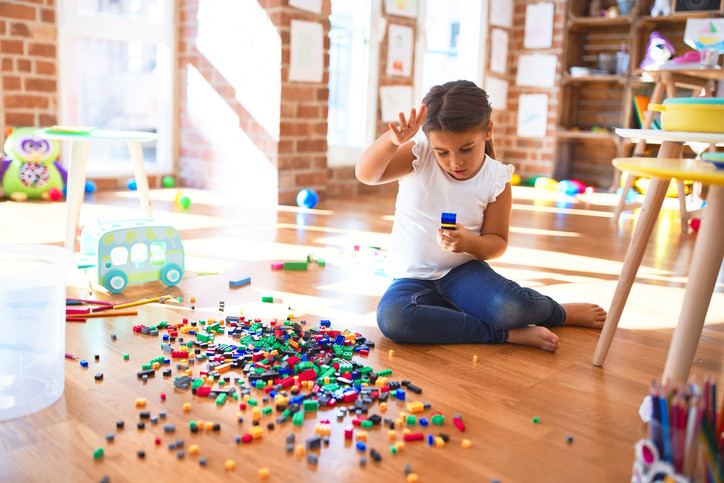How to get your child to put away toys

If you frequently find yourself stepping on a building block, tripping over a doll, or stumbling over a race car, then you know the challenges of getting younger children to put away their toys. Below are a few strategies to encourage children to clean up after themselves and keep the house tidy.
Make specific and focused requests
Asking your child to put many different things away all at the same time can leave room for children unintentionally to forget at least one of your requests — or intentionally skip a few. Make one specific request at a time, such as "Please put your blocks back in the bin on the shelf." After your child has finished one task, then you can request that your child puts a different toy away.
Make requests in the form of a command, not framed as a question like "Will you please clean up your blocks?" Asking a question leaves room for the child to reply, "No." Also, unless you want this to be a group activity, frame the request for just your child: "Please put your blocks back in the bin on the shelf" instead of "Let's clean up the blocks."
Give your child time to comply, and repeat yourself only once
Children, especially young children, take more time than adults to process information. Count to five in your head after you make an initial request, to give a child time to process what you said and to comply.
If you don't see the required action after five seconds, repeat your request in a neutral tone followed by a potential logical consequence. For example, "If you do not put your blocks away in the bin on the shelf, then you will not get to play with the blocks for the rest of the day. You can play with them tomorrow."
Count to five in your head again. If your child still does not do what you asked, say the following in a neutral tone: "Okay, you did not put the blocks away in the bin on the shelf, so you do not get to play with them for the rest of the day. You can play with them tomorrow." You can then put the blocks away and out of reach from the child so that the toys are not in use for the remainder of the day.
Stay calm and choose logical consequences
Two key elements of this approach are to remain as calm as possible and create a logical consequence.
- Staying calm helps. Understandably, you may be very frustrated. However, it's best to give as little attention to noncompliance as possible. Attention, even in the form of a negative tone, can make the behavior happen more often.
- Logical consequences matter. Creating consequences that are for extensive periods of time and do not make sense to the child may spark more frustration and refusals. For example, it would not be logical for the child to lose TV time for a week if the child did not put their blocks away. Instead, limiting access to the toy is a logical consequence.
Praise behaviors you want to see
Shine attention on behaviors you'd like to see more often. Any time your child does put toys away, praise them specifically. "Good job" can confuse: the child will not know exactly what was good — sitting quietly, putting toys away, or something else. Instead, say, "Great job putting the blocks in the bin on the shelf!"
Praise with enthusiasm, and use touch, such as a pat on the back, to strengthen a behavior. If you have a child who has sensory processing difficulties, especially with tactile stimuli like a pat on the back, you can reinforce the behavior with a nonverbal gesture, such as a thumbs up.
Your days of repeating commands until you're blue in the face and cleaning up after your children do not have to continue. The steps above can give you a breather and help your children learn to pick up after themselves.
About the Author

Jacqueline Sperling, PhD, Contributor
Disclaimer:
As a service to our readers, Harvard Health Publishing provides access to our library of archived content. Please note the date of last review or update on all articles.
No content on this site, regardless of date, should ever be used as a substitute for direct medical advice from your doctor or other qualified clinician.












